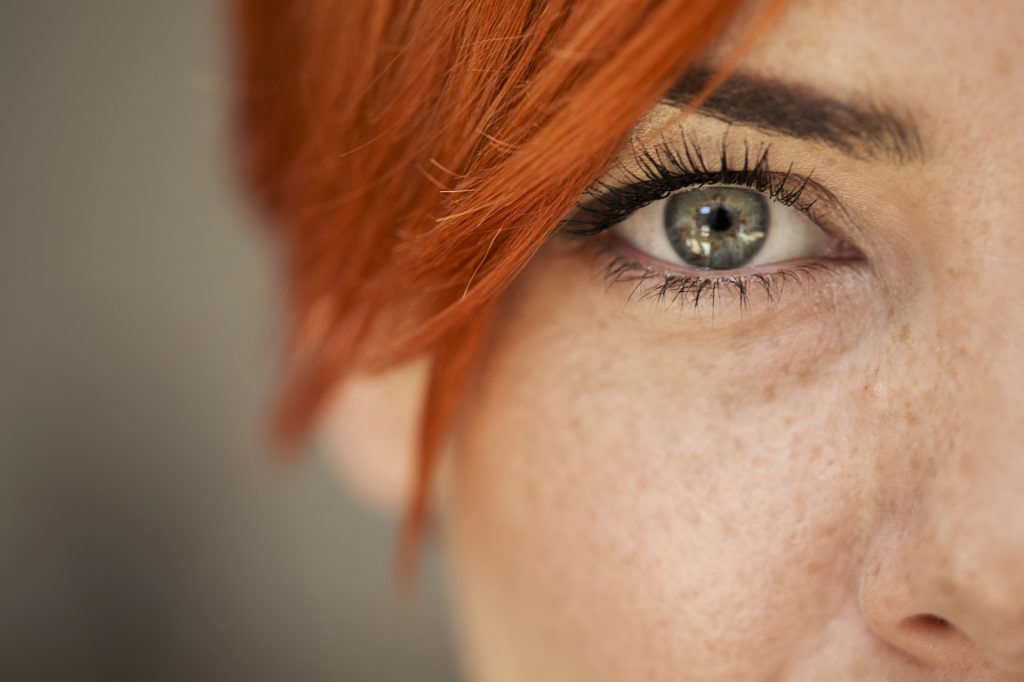
What is Hyperpigmentation?
Hyperpigmentation is caused by the overproduction of melanin. It can be related to genetics, skin conditions, hormones, and medications, and it can be exacerbated by heat and UV exposure. A wide variety of conditions exist and are most commonly benign, but they can be aesthetically significant. Some common conditions are:
Post inflammatory Hyperpigmentation (PIH)
PIH is caused by stimulation of the pigment producing cells (melanocytes) in the skin. It is more common in individuals with darker skin types. A variety of factors may contribute to PIH, including inflammation from sun and heat exposure; skin conditions such as dermatitis; irritation from procedures such as waxing, laser, or chemical peels; picking; trauma; etc. Treatment must be conservative in order to avoid further irritation and exacerbation of the condition.
Melasma (cholasma)
Melasma, or chloasma, is a form of pigmentation that results in symmetrical, blotchy facial pigmentation that spares sun protected sites. It is more common in women and may be worsened by pregnancy and oral contraceptives. Sunlight and/or heat exposure are also well described exacerbating factors.
Ephiliedes (freckles) and lentigenes
Ephiliedes and lentigenes are flat pigmented spots that result from an increase in activity in epidermal melanocytes. They may darken and increase in number with age and sun exposure.
Nevus (mole)
These are clusters or nests of a type of melanocytes (nevus cells). They can range in size and color and may be pigmented or nonpigmented. Moles usually develop in the first 20 years of life and are typically benign; however, they can rarely represent a melanoma. Patients with a large number of moles, Irregular, or changing moles should be evaluated.
Other
- Café au lait: Localized areas of increased melanin, typically present at birth. Present in 25% of us.
- Seborrheic keratosis: Benign epidermal growth that has a dull, warty, stuck-on appearance.
- Dermatosis papulosa nigra: Variant seen frequently on the cheeks of those with darker skin tones.
- Stains (hemosiderin): An iron complex that may be deposited in the skin following breakdown of red blood cells, causing a brownish discoloration.
- Tattoos: Coloring agents of tattoo ink include inorganic metallic deposits and titanium, iron and aluminum, making laser treatment somewhat unpredictable. Blacks, blues, and reds tend to have the best response.
Treatment Options for Hyperpigmentation
IPL (Intense Pulse Light)
Also known as a photofacial, IPL emits light that is absorbed by the browns in the skin and can be very effective for the treatment of freckles and lentigenes. Multiple treatments are recommended.
Alexandrite (755nm) laser
The Alexandrite laser is a relatively long pulsed laser that is effective for spot treating darker lentigenes.
Medlite laser (Q Switched Nd:Yag)
The Medlite laser is a short pulsed laser (nanosecond range) that is effective for treating smaller structures, such as melanosomes (pockets of pigment) and tattoo ink particles. We commonly use this laser for melasma and individuals of darker skin tone.
Venus Viva
Venus Viva offers anecdotal improvement in hyperpigmentation, even in patients with darker skin tones.
Fractional CO2
Fractional CO2 laser resurfacing can be used to improve pigmentation and wrinkles.
Chemical Peels
Chemical peels involve the application of an exfoliating agent, resulting in controlled depth of skin peeling.
- Superficial and medium peels: Exfoliate the skin and improve discoloration and uneven tone. Downtime ranges from none to one week, depending of the type of peel.
- Medium and deep chemical peels: TCA peels and Hetter (phenol, croton oil) chemical peels can be used to treat both pigmentation and wrinkles. Anesthetic is required, and downtime is more significant.
Home care and Maintenance
Our skin care professionals can also guide you to home techniques and topical remedies for treating hyperpigmentation.
- Photoprotection: First and foremost, photoprotection is the best home technique for improving and/or preventing symptoms of hyperpigmentation. Any treatment is likely to have little effect on the skin without proper sun protection, including sun and heat avoidance as well as broad spectrum sunscreen with the physical blockers zinc oxide and titanium dioxide.
- Hydroquinone 4%-8%: Prescription strength topical medication that acts by inhibiting the production of melanin. It is most effective for melanin located in the epidermis, and improvement should be seen within 3 months. A skin lightener/brightener.
- SkinMedica Lytera® Skin Brightening Complex: A non-prescription alternative that features a patented blend of vitamin C, vitamin B, vitamin A, and peptides. A skin lightener/brightener.
- Dermalogica C-12 Pure Bright Serum: A non-prescription alternative that features a blend of oligopeptides and antioxidants to help regulate melanin production. A skin lightener/brightener.
- Retinoids: Increase epidermal turnover, facilitating melanin dispersion and removal. Tretinoin (Retin-A) is a prescription strength topical medication derived from Vitamin A. Non-prescription alternatives include SkinMedica® Retinol Complex and Avene Retrinal, which is less irritating and suitable for sensitive skin types.
- Azelaic acid: A prescription cream used twice a day to treat acne, melasma, and PIH.
